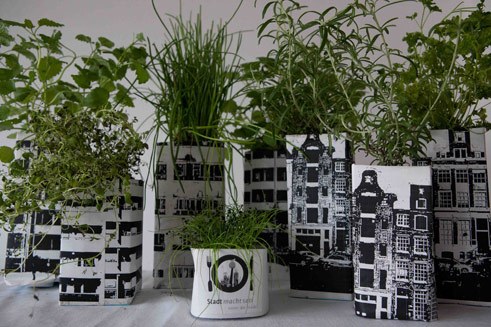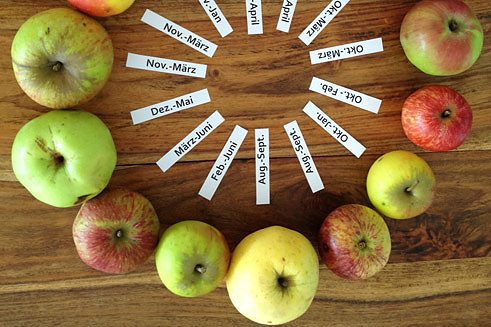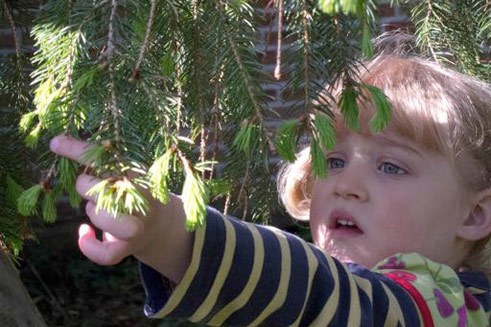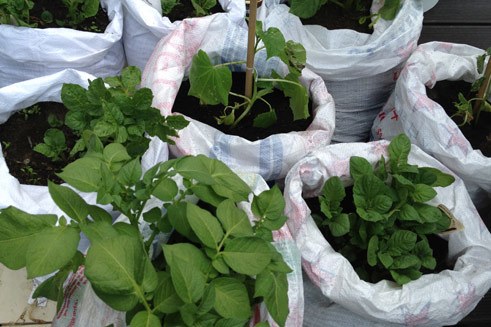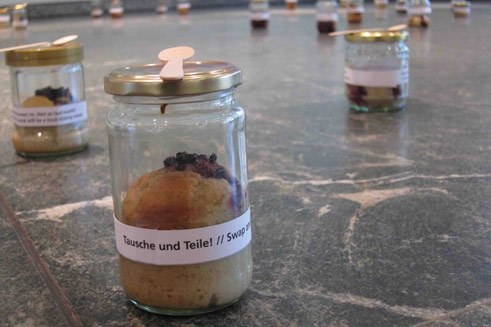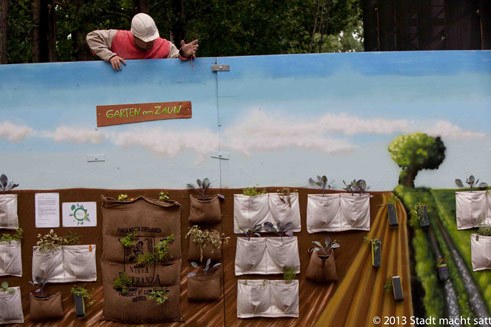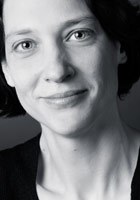Anja Fiedler
Food for the city – harvest the city
shaping the future through food
Food in cities comes from the supermarket, and you have to pay for it – that’s what everyone assumes! It does not have to be like that, however. Every city-dweller has a veritable treasure chest full of food and unused resources right on their doorstep: natural delicacies that go unused (fruits, wild plants, berries, honey), plus an abundance of perfectly edible foodstuffs that have been rejected and end up in rubbish bins every day. Windowsills, balconies, gardens and parks can all be turned into productive mini-gardens in urban gardening projects.City nature, city abundance and urban gardening are the three main elements of my “Stadt macht satt” (i.e. Food for the City) initiative, which involves looking and thinking differently about our cities and our food. I want to teach people in cities how they can live more sustainably. I use what I call my “Stadt macht satt” glasses to make these wasted resources visible and to show what we ourselves can do in our everyday urban lives to make the future better.
And it’s pretty straightforward: I use the example of an apple to explain how the global industrial economy works, allow pupils to experience biodiversity for themselves, encourage them to eat a healthy diet and show them how cities could be supplied differently and more sustainably in future.
Under the umbrella of the “Stadt macht satt” initiative, many different new projects, campaigns and art installations have now emerged: there are for example junior city cooks who creatively provide meals for their schools made out of leftover food, and urban gardeners who grow plants in space-saving window gardens, salad trees and vegetable towers, and use “city tree schools” to rethink and green up our homes, parks and cities. The “Stadtnutz(t)pflanzen- Garten am Zaun” project, in which we turned a construction fence into a mini-garden, shows how important urban greenery also is for social reasons. The Apfelschätze project is all about self-sufficiency, traditional knowledge, climate change and global food production. Every year, I “rescue” tonnes of apples, helping to supply city-dwellers with apples for months at a time. With a group of teenagers I set off on a three-week journey “to track down food” – that was quite a challenge! We decided that we would only live off what we could find for the entire time. This was also a profound experience for me. My staged meals and exhibitions about eating up everything are not only about making food last longer but also about preserving global food cultures and knowledge. My “Skinfood” project is also linked to traditional knowledge and involves making cosmetics out of leftover food. First and foremost, the focus here is on pollutants and self-determination.
“The job of art is to open doors where nobody sees them.” Peter Weibel
I call my work “art in action” or “social sculptures” – inspired by Joseph Beuys, who wanted his art to encourage people to actively shape their society. No matter whether I am working with nursery school children, entrepreneurs or local neighbourhood residents, what is important for me is that all kinds of different people end up talking with one another about a particular topic and that their different perspectives give rise to their own questions. Depending on those taking part in the discussion, the answers may lead to all kinds of different topics: biodiversity, better use of resources, the economy, urban development, post-growth society, climate change and many others. Lasting change normally results from the concrete experiences, the participants’ own questions and their joint discussion within their own environment.
The questions lead to dialogues and ideas, with many participants ultimately pursuing concrete activities that change their everyday lives and environment.
I came up with the idea for “Stadt macht satt” in 2010 when, together with 17 other artists, I was asked by the “ÜBER LEBENSKUNST.Schule” initiative to develop a school project about “What is the good life in an ecological crisis”. This led to the first project with the Gipscafé pupils’ enterprise.
It has long been the case that I not only run projects in schools and nurseries but can also share my ideas and experiences through lectures, continuing education programmes for teachers, and art events. I get invited to other countries to discover the histories of foods and unexploited urban potential, as was the case during my “Sauerkraut” campaign in Taiwan. It is always exciting to give children and adults a taste for good food – food that we like but that is also good for our environment. It is a lot of fun to share these discoveries and find new ways of thinking about and greening up our homes, parks and cities.
In “Zum Glück gibt’s was zu essen”, one of my art events, I explored together with my guests when food makes us happy. And after all the years of my project, I can certainly say that eating, gardening and green cities make us happy. People who live in cities like we do cannot be entirely self-sufficient, but wherever we consciously cook, harvest and plant we will also find that new social, ecological and economic ideas will thrive. And in the process, not only our cities but also our activities will automatically become “greener”.
If you would also like to do something good for yourself and for the future with food – in your school, neighbourhood or company – then I would be delighted if “Stadt macht satt” were to inspire you to take action yourself.
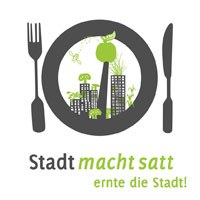 © Anja Fiedler
Stadt macht satt was described by UNESCO in 2012/2013 and by ZEIT-Stiftung in 2014 as an exemplary project for teaching children and adults about thinking and acting sustainably.
© Anja Fiedler
Stadt macht satt was described by UNESCO in 2012/2013 and by ZEIT-Stiftung in 2014 as an exemplary project for teaching children and adults about thinking and acting sustainably.about the author
Anja Fiedler is an artist, culture manager and social entrepreneur. She works in the area where art, society and the economy intersect. Her passion is to bring all kinds of different people together in projects so as to create new perspectives, ideas and synergies. She focuses in particular on ideas for changing the way we use resources, on new forms of operating and working, and on welfare and education concepts.
